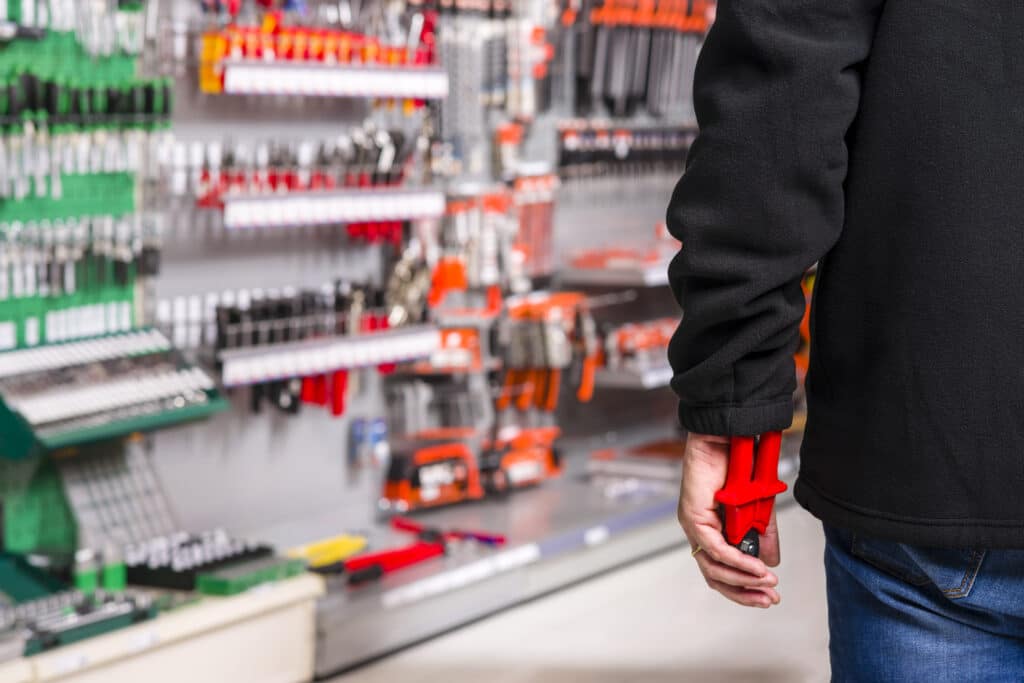
In a perfect world, businesses wouldn’t need to safeguard merchandise and property against retail theft. However, a National Retail Federation study indicates that shoplifting incidents have risen 93 percent since 2019, with dollar losses increasing by 90 percent. So, the situation won’t get better anytime soon. While many independent retailers have ramped up security using a combination of technology and store personnel, some owners may have overlooked key preventative measures. Detering thieves requires implementing multiple layers of detection. Based on the store’s budget allocated for security purposes, some of the listed recommendations may be more applicable to your business than others. Always start with a commonsense approach, then expand into more complex detection methods.
- 76 percent of retailers reported ORC shoplifting as a growing concern
- Group thefts involving 2-3 people increased by 62 percent
- Fewer than half of theft incidents are reported to law enforcement due to limited response
Begin with Employee Training
Well-trained employees can be one of the best lines of defense. Someone should be available to greet each person as they enter the store and to monitor activities casually without being overbearing. Be careful to avoid profiling people by groups. It’s critical to educate staff members regarding the general behaviors of shoplifters and to train your team to be alert for suspicious activity.
- Watching the cashier or staff instead of shopping
- Wearing heavy clothing in warm months
- A person is fidgety and randomly picks up items
- Enters store often, yet never buys anything
Schedule More Employees on Peak Days
Hardware stores can get busy during certain hours, on weekends, and during peak selling seasons. It’s critical to staff employees appropriately. When a few workers are operating the ship, thieves get busy. While salesclerks are ringing up customers and someone on the floor is helping a shopper locate merchandise, shoplifters see this as an opportunity to stock up. Thieves often work in teams. While one person is busy distracting an employee, their partner in crime is concealing merchandise.
Add Security Systems and Technology
If you have a small staff, someone may not always be near the entrance when customers enter. Installing a motion sensor door alert system will make employees aware that a customer is entering the store. Positioning mirrors where there are blind spots will increase visibility and enable the staff to monitor activities while giving customers the ability to shop freely.
Depending on the size of your store, video surveillance or Closed-circuit television (CTTV) remote monitoring may be an affordable deterrent to theft. Many reputable companies provide these services. Companies often use remote monitoring instead of onsite security to have professionals monitor indoor and outdoor activities and prevent break-ins after closing. It’s a good idea to post signs in places where they will be clearly visible. Shoplifters look for surveillance cameras, so put the signs up high and near the front and back doors.
Security Tether Cable. Power tools can cost thousands of dollars, and retailers would be wise to ensure they are secure against theft until purchased. Professional shoplifters make their living by stealing. They are hard to spot and target merchandise with high resale value. Areas with expensive merchandise should be closely monitored, and staff should be ready to answer questions and provide service when needed.
While shoppers aren’t fans of lockable displays and cabinet locks, they understand these fixtures are necessary for retailers to prevent theft. Stores with a shortage of employees should work hard to avoid keeping customers waiting to access items stored behind lock and key. Video surveillance and attentive employees serve dual purposes of assisting customers and thwarting shoplifters.
Electronic Article Surveillance (EAS) works by attaching an electronic “tag” or “label” to the merchandise. When the electronic device passes by an antenna installed at the store entrance/exit, an alarm alerts the staff that unpaid merchandise is leaving the store. EAS systems can also be a visual deterrent to casual shoplifters. According to statistics, an EAS system can reduce losses by about 70 percent.
Understandably, store owners can’t lock up or tag everything in their store. There’s a fine line between keeping merchandise secure and creating an atmosphere that makes it unpleasant for honest customers to enjoy shopping in the store. It helps when associates regularly touch base with customers to ask if they need assistance. Customers who come to buy appreciate the extra attention, and shoplifters are deterred since they will believe they are being watched.




